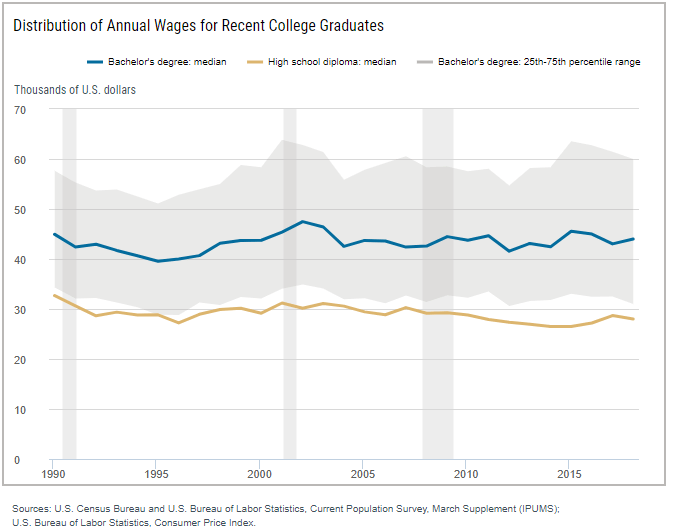Unemployment Rates
With college tuition increases outpacing inflation by a substantial margin, it’s normal to ask whether a college degree is worth the cost. One metric for determining that is whether a degree results in lower unemployment. A recent New York Fed report shows that college graduates have consistently lower unemployment rates than those without a degree. Not only that, but during recessionary periods (the shaded areas in the chart below) those without degrees suffer far higher unemployment rates.
Additionally, the trend repeats for wages: even degree holders in the 25th percentile of earnings among recent grads (those aged 22-27) out-earn the median for those holding only a high school diploma.
For 2018, the median for those with a bachelor’s degree was $44,000, compared with $28,000 for those with a high school diploma. The class of 2018 graduated with an average student loan balance of $29,800, which would translate to monthly loan payments of around $350 for 10 years. Net of loan payments, the median college grad with an average loan balance comes out ahead by a substantial margin.
The report also shows outcomes by major for recent graduates. Interestingly, many fields with low unemployment rates have higher-than-average underemployment rates.


